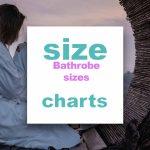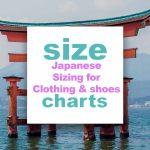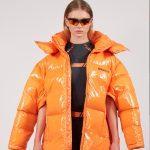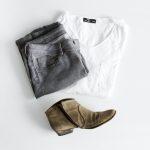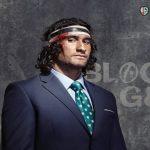How to Measure Your Body for Clothing Sizes
Marie explains how to measure your body for clothing sizes in a good build article. We offer easy how-to instruction to get the best size indication for men, women, and children. In order to help you, this page offers size conversion charts and body types (Petite, plus, Pear, X shaped bodies,…)
What body shape am I – is it an hourglass, a triangle, or maybe a rectangle? This type of body makes a difference but it’s all based on your body size measurements. If you need to learn more about gender neutral sizes or unisex sizing, read this post
When you take your body measurements, you’ll need a cloth measuring tape, also called a soft measuring tape. Don’t use a metal measuring tape.
A full expert research about the importance of measuring your feet for shoe sizes.
How to measure a belt? All about international belt sizes and measurement tips here
Body size: What You Should Measure
An important note on how to measure your body for clothing sizes: Ideally, only wear your undergarments. However, close-fitting clothing will be fine. Do NOT measure yourself wearing jeans, sweats, or other bulky clothing. It DOES make a difference!
Chest or Bust size
This measurement is used for tops and dresses.
Measuring Women’s bust size:
Place one end of the tape measure at the fullest part of your bust and wrap it around your body to get the measurement, keeping the tape parallel to the floor. Keep the tape snug but not too tight. This is mainly situated under your armholes.
TIP: Wear a non-padded bra to get the best measurements.
Measuring Men and kids’ bust size
Place one end of the tape measure at the center of your chest. Wrap it around your body, keeping the tape parallel to the floor.
Bra Sizing
Bra sizes are based on a unique system based on two measurements of the bust area, band size (or underbust) and bust size. A correlation between those 2 makes the cup size. For detailed instructions on how to measure to determine bra size and get a correct fit, please see: How to Measure for a Bra.
Waist measurement
This measurement is used for tops, dresses, and bottoms.
Most clothing lines use the measurement of the “natural waist” for their size charts. To measure your natural waist, you want to find the narrowest part of your waist, located above your belly button and below your rib cage. The natural waistline is located about 2 inches (5 cm) above your belly button
TIP: Breath in and out normally. Don’t suck in your stomach as this will give you inaccurate results
Note some brands use a “low” waist measurement. You get this measure at the point where your trousers normally ride.
Hips
This measurement is used for bottoms and sometimes for dresses.
Stand straight with your feet together and measure the fullest part of your hips. Be sure to go over your buttocks as well, it is about 8 inches (20 cm) below your waist. Make sure to keep the tape consistently level when you do it alone; it is recommended that you have a friend assist you with this or that you do it in front of a mirror.
Inseam
This measurement is used for trousers and jeans.
The inseam is the distance from the uppermost part of your thigh to your ankle. Measure from the crotch to the cuff on the inside seam of the leg. The number of inches is the inseam length. It’s best to measure your inseam with a pair of shoes on.
TIP: You can cheat by measuring the distance from the crotch to the hem of the favorite, best-fitting pair of pants you already own. Make sure you place your pants on a flat hard surface to get the most accurate results.
Women’s inseam measurement
Keep in mind that the accurate inseam measurement depends on the type of footwear you plan to use. (wearing heels or flats makes a difference). The bottom of your pants must hit at the middle of the heel shaft or end slightly above the flat shoe.
TIP: Take two measurements for inseams — one for trousers you’d wear with heels, and one for trousers you’d wear with flats.
Neck measurement (mainly for male body)
Neck measurement is commonly used for sizing men’s dress shirts. Male dressed shirts in U.S. sizes actually use the neck size in inches as the “shirt size.”
To measure your neck, place the tape at the base where your neck connects to your shoulders. This should be just below your Adam’s apple. Ensure that you’re not wrapping the tape too tightly around your neck, put 1 finger between the tape and your neck. This measurement is your true neck measurement.
TIP: For your dress shirt neck measurement, add a half-inch to a round number or round up to the nearest half-inch.
How to measure shoulders for men clothing sizes?
- This body measurement is best taken with a friend or you use a favorite shirt that fits nicely and measures it.
- Measure from the back, not the front.
- Place one end of the tape measure at the point where the horizontal part of the shoulder and the vertical part of the arm meet.
- Then run the tape across your back following the natural curve of your shoulders.
How to measure sleeve length:
Sleeve measurement is often used for sizing men’s dress shirts.
You will need a friend to assist you in measuring sleeve length. Measurements should be taken from the back by placing one end of the tape at the middle of your neck and running it down your shoulder all the way to the meaty part of your palm, i.e. the thenar. Bend one arm at a 90-degree angle and place your hand on your hip. Standard sleeve lengths fall between 32 and 39 inches.
TIP: Sleeve sizes are always in whole numbers; round up to the nearest whole number.
How to measure your body for dresses?
- Chest: Place the tape close under the armhole and measure the widest part of your chest
- Waist: This is the narrowest part at the waist.
- Hip: Place the tape approximately 7–9 inches below the natural waistline
- Flare: The Flare Length is the bottom wide length of your dress.
- Strap to Hem: This is length from the top of the strap down to the hem.
- Waist to Hem: This is length from the top of the waistband to the bottom of the hemline.
What is my body type?
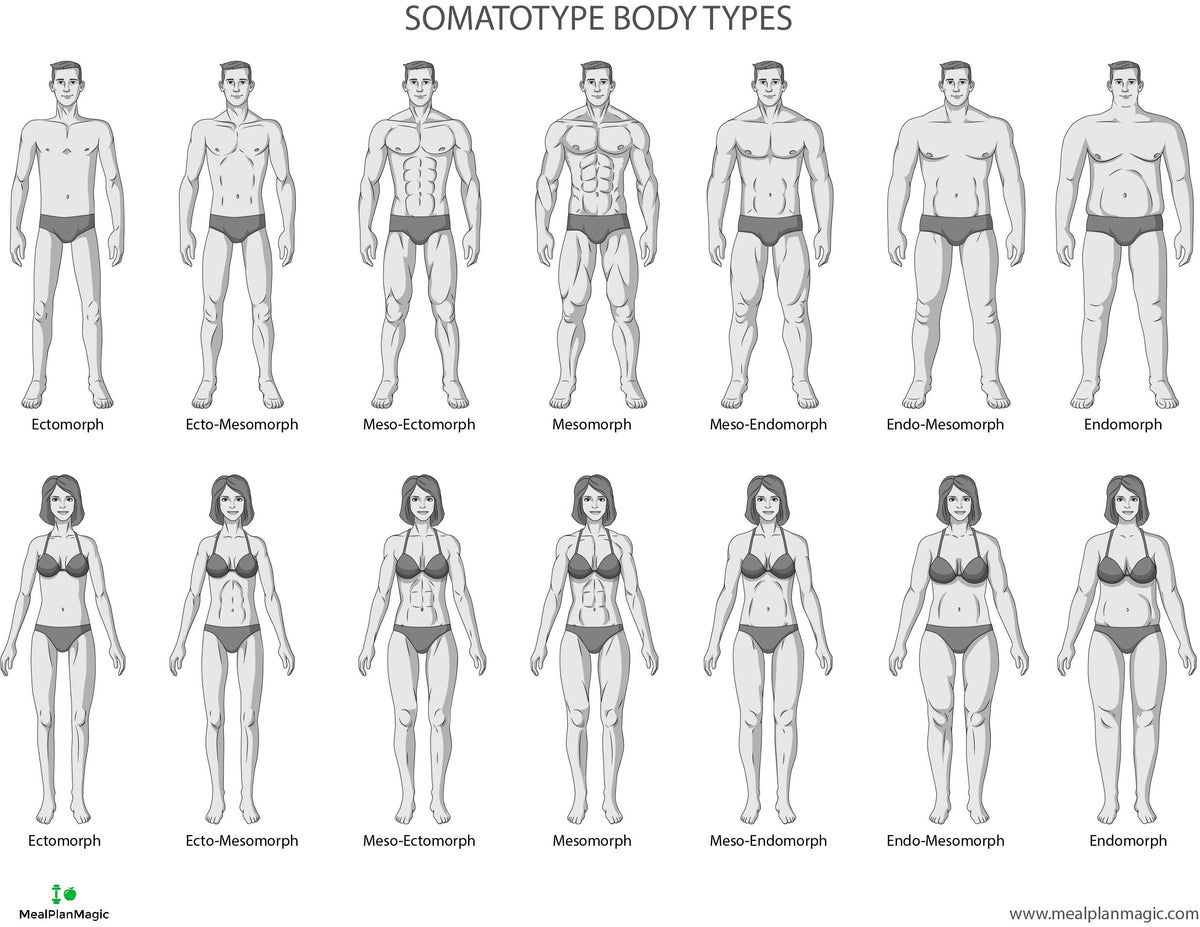
The world’s population can be defined as one of the seven most popular types. Once you’ve past puberty it’s practically impossible to change your body type. There are three somatotype body types: ectomorph, endomorph, and mesomorph
- Hourglass: The bust and hips sizes are proportional and well-balanced, and you have a clearly defined waist. About 10% of the population is this bodysize. A 36 24 36 body is a type of hourglass figure, or in centimeters it equals the 90 60 90 figure. The hourglass body type is also refered to as the Meso-ectomorph body type
- Top hourglass: it is similar to the regular hourglass with a defined waist. Your bust is visibly larger than your hips. This is a typical mesomorph body. Mesomorphs are the best body type for bodybuilding
- Bottom hourglass: this body type has a clearly defined waist like the top hourglass. Your bust is smaller than the hips. This body type is also called the Endo-Mesomorph type. People that gain muscle quickly but also sensitive of gaining weight
- Spoon/apple: if you’re a spoon, your hips are much larger than your bust. Your hips have a shelf-like appearance, and you have a well defined waist. This is a typical endomorph body type
- Triangle/pear: triangles have a slim upper body and wide hips (typically wider than the shoulders). Their waist is not clearly accentuated. A pear body type is often refered to as a triangle body type. This is a Meso-endomorphic body
- Inverted triangle: inverted triangles have a subtle waist and a proportionally larger upper body. Your bust and shoulders are pretty broad, and the hips are slim. This is called a Meso-ectomorphic body
- Rectangle: your hips, waist, and bust are about the same size. Your body is well proportioned and athletic in appearance. Rectangle shaped bodies are Ectomorphic body types.
Body shape to body type converter
| Body Shape | Body Type | Description | Widest part | Narrowest part |
| Hourglass | Meso Ectomorph | A well-defined waist with even hips and bust | Bust Hips | Waist |
| Top Hourglass | Mesomorph | A well-defined waist with a visibly larger bust | Bust | Waist |
| Bottom hourglass | Endo Mesomorph | A well-defined waist with visibly larger hips | Hips | Waist |
| Pear/Triangle | Meso Endomorph | Bottom-heavy | Hips | Shoulder Bust Waist |
| Inverted triangle | Meso Ectomorph | Top-heavy | Shoulder Bust | Waist Hips |
| Rectangle | Ectomorph | Even measurements without much difference | Shoulder Bust Waist Hip | – |
| Apple/Spoon | Heavy midsection | Bust Waist | Hips |
How body Measurements convert into Sizes
When you’re shopping online, check the size charts first. Clothing manufacturers or fashion brands will inform you about the bust, waist, and hips measurements in inches or centimeters that convert into sizes. Each brand or designer uses a different scale, so the measurements of your body are a solid base on which that brand bases its sizing.
How to measure your body for clothing sizes explained
Picture in this post by Huha Inc. on Unsplash
Conclusion on how to measure your body for Clothing sizes
Understanding your body type is the first step to understanding what clothes work best for you. You’ll find your body type based on your body measurements. In this How to measure your body for clothing sizes we explain the parts of your body that matter. This knowledge will help you in your online shopping or when you plan to make your own clothes.
Related Clothing size charts
- Zara Women’s Size Chart – All Sizes for Clothes, Accessories and Shoes
- Bathrobe Size chart : How do I know my robe size ?
- Japan size charts – A full Guide to Japanese Apparel Sizing
- Shein Women’s Size Charts and Fitting Guide for Clothes & Shoes
- Farah Size Charts
- Firetrap Size Charts for Adults and Kids
- US Kids Clothes Size Chart : What are kids sizes in US – UK – EU ?
- Men’s Clothing Size Chart + Size Conversion
- Filling Pieces Size Charts
- Full Circle Size Charts
- Lularoe Size Chart and Fitting Guide
- Fred Perry Size Charts
- Asian Size to US Size Clothes
- French Connection Size Charts
- GANT Size Charts
- Axel Arigato Clothing Size Charts
- J jill Size Charts for Women
- Jumpsuit Size Chart for Adults and Kids
- Karl Lagerfeld Women Sizes
- Madewell Size Charts for Adults and Girls
- US Plus Size Chart for Men and Women
- French Size to US: Shoes & Clothes Size Charts
- Men’s Dress Shirt Size Charts
- Suit Sizes Charts for Men and Boys
- Roxy Size Charts
- Quiksilver Size Charts: Men, Women, Kids
- Gucci Hoodies Size Charts
- How Long Should My Tie Be? (Size chart included)
- Medium Size Chart for Men (in clothes, belt,…)
- UK to US Clothes Sizes Charts
- Volcom Size Charts for Men and Women
- Just Cavalli Size Charts
- Howick Size Charts
- John Galliano Size Charts


